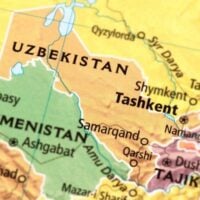Deadline: 9-Nov-22
The Environmental Protection Agency is accepting applications for its Enhance Aquifer Recharge Performance and Potential Risk in Different Regional and Hydrogeologic Settings.
One of the high-priority research areas identified by the Environmental Protection Agency’s (EPA) Office of Research and Development (ORD) and the National Water Reuse Action Plan (WRAP) is to establish best practices for enhanced aquifer recharge including the use of impaired sources of water.
Under the 1996 Amendments to the Safe Drinking Water Act, the responsibility for ensuring public water systems provide safe drinking water is divided among EPA, states, tribal nations, water systems and the public (U.S. EPA 2022).
The WRAP was developed in collaboration with federal, state, tribal, local, and water sector partners to build technical, financial, and institutional capacity for communities to drive progress on water reuse practices. This research is relevant to WRAP action on increasing the understanding of current aquifer storage and recovery practices.
The Science to Achieve Results (STAR) Program’s goal is to stimulate and support scientific and engineering research that advances EPA’s mission to protect human health and the environment.
Research Areas
-
Research on the effect of local subsurface geology and hydrology on EAR effectiveness for enhancing water quality and ensuring a safe supply of drinking water. To enhance understanding of how subsurface geology affects successful aquifer recharge, applicants should propose research on subsurface characteristics to enable site characterization. This can include but is not limited to:
- Aquifer type (unconsolidated, consolidated, unconfined, confined, mixed, anisotropy in properties)
- Potential for contaminant mobilization
- Potential for induced seismicity from groundwater recharge
- Impact of discrete subsurface heterogeneity
- Lithology (geochemical properties)
-
Research on the effect of source water (excluding oil and gas produced water) and the ability of sub-surface geology to degrade or attenuate conventional and emerging contaminants (including pathogens) that might be found in different sources of water. This can include but is not limited to:
- Vadose zone physical, mineralogical, and chemical properties
- Aquifer types (sedimentary, carbonate-karst, igneous and metamorphic)
- Various sources of waters (stormwater, agricultural drainage and return flows, recycled municipal wastewater)
- Characterization of background water quality prior to EAR implementation
- Treatment of water both before recharge and after extraction, especially where groundwater is used as a source of drinking water
- Mobilization of natural contaminants
-
Research on methods and technologies for monitoring and maintenance of EAR systems to improve and maintain performance and operational efficiency (both source water quality and quantity) and reduce potential environmental and public health risk. This can include but is not limited to:
- Monitoring needs, new methods and technologies
- Target parameters for monitoring and monitoring frequency and risk
- Maintenance needs, new methods and technologies (e.g., to reduce clogging)
-
Research on computational modeling and scientific visualization. This can include but is not limited to:
- Better predictive modeling and characterization of uncertainty to represent performance and risk Linked geohydrological and geochemical modeling
- Improved models in karst and fractured rock aquifers
- Integrated measurements and modeling of surface and ground water when applicable
- Demonstration of useful modeling in practice
Funding Information
- Estimated Total Program Funding: $8,000,000
- Award Ceiling: $2,000,000
Outcomes
- Increased adoption of fit for purpose EAR including better ability for state, tribal, and local water-quality managers to plan, construct, maintain, and monitor EAR practices
- Increased understanding of the risks, benefits, and consequences of EAR practices, given particular source waters, subsurface geology, and groundwater end use
- Improved groundwater sustainability
Eligibility Criteria
- Public and private nonprofit institutions/organizations, public and private institutions of higher education (IHEs), and hospitals located in the U.S. and its territories or possessions; state and local governments; Federally Recognized Indian Tribal Governments; and U.S. territories or possessions are eligible to apply.
- Profit-making firms and individuals are not eligible to apply
For more information, visit Grants.gov.
For more information, visit https://www.grants.gov/web/grants/view-opportunity.html?oppId=343555









































